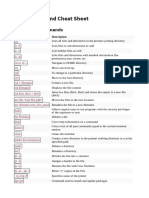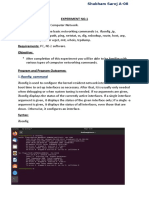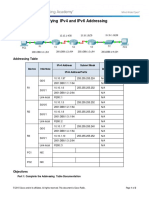0% found this document useful (0 votes)
93 views4 pagesLinux TroubleShooting Commands
The document provides a list of essential Linux troubleshooting commands, including their syntax and options. Key commands discussed are 'hostname', 'host', 'ping', 'ifconfig', 'route', and 'ip', each serving specific functions related to network configuration and diagnostics. These commands help in identifying hostnames, checking connectivity, configuring network interfaces, and manipulating routing tables.
Uploaded by
ishaan0643.be21Copyright
© © All Rights Reserved
We take content rights seriously. If you suspect this is your content, claim it here.
Available Formats
Download as DOCX, PDF, TXT or read online on Scribd
0% found this document useful (0 votes)
93 views4 pagesLinux TroubleShooting Commands
The document provides a list of essential Linux troubleshooting commands, including their syntax and options. Key commands discussed are 'hostname', 'host', 'ping', 'ifconfig', 'route', and 'ip', each serving specific functions related to network configuration and diagnostics. These commands help in identifying hostnames, checking connectivity, configuring network interfaces, and manipulating routing tables.
Uploaded by
ishaan0643.be21Copyright
© © All Rights Reserved
We take content rights seriously. If you suspect this is your content, claim it here.
Available Formats
Download as DOCX, PDF, TXT or read online on Scribd
/ 4








































































































